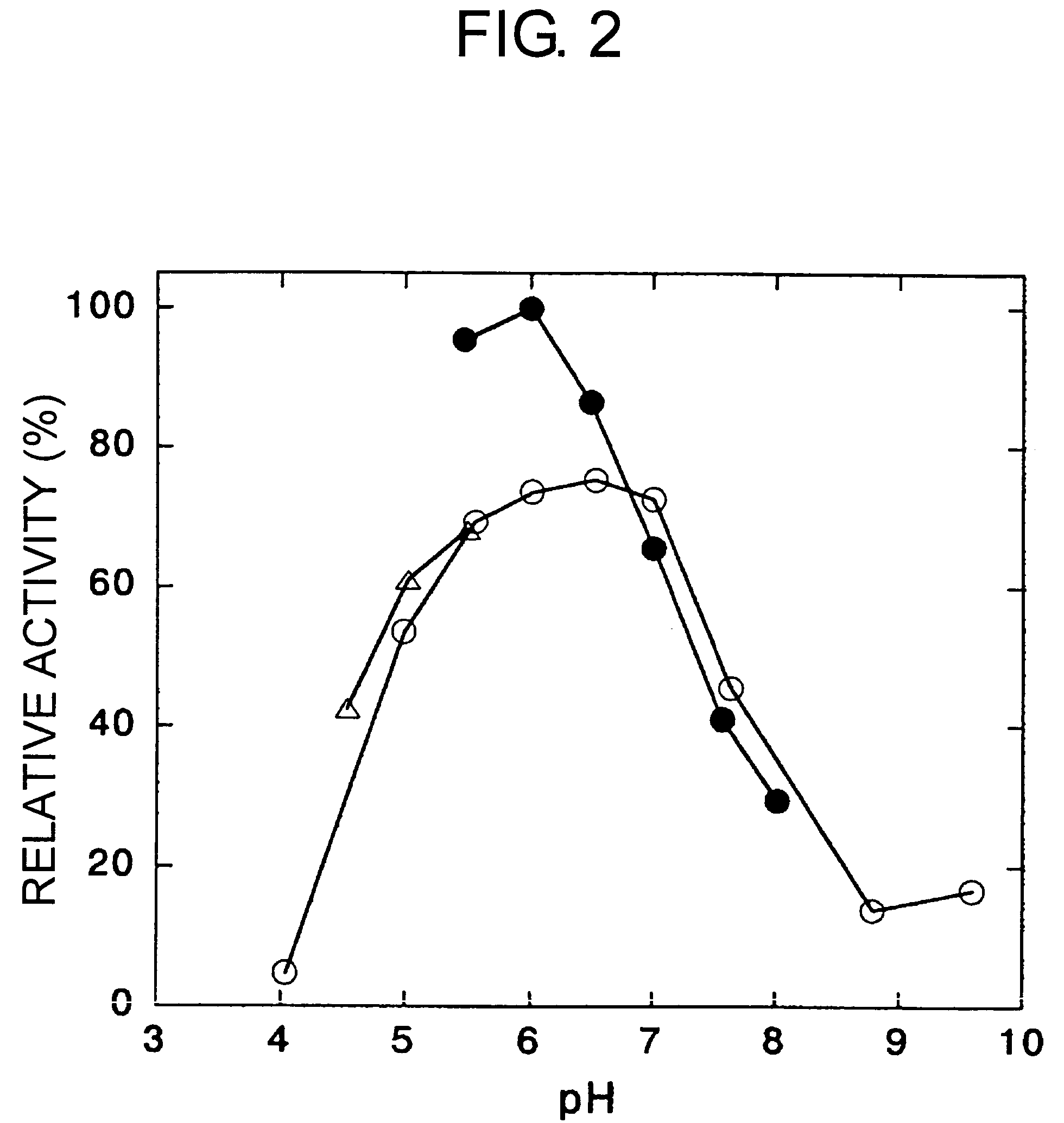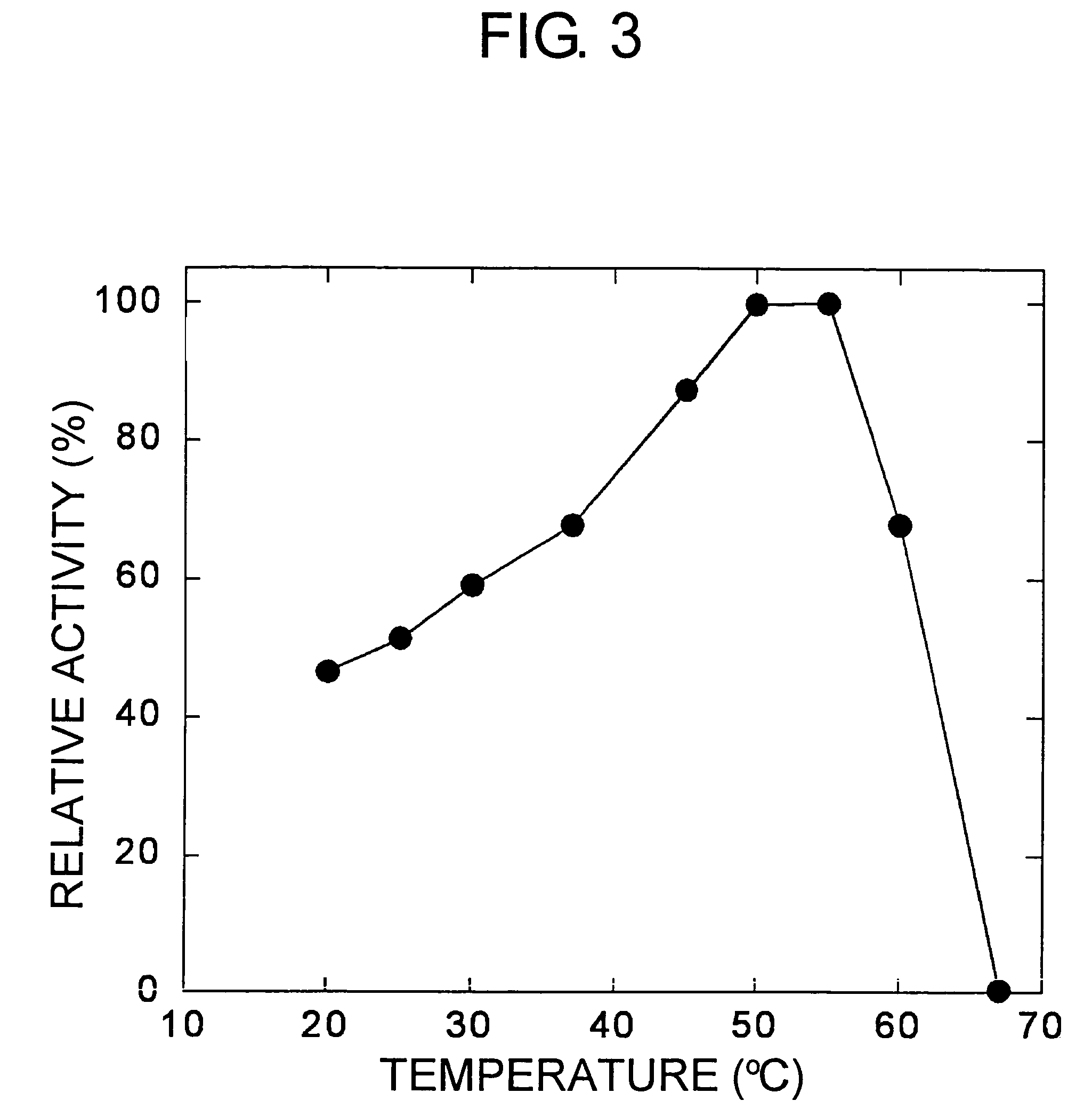Carbonyl reductases, polynucleotides comprising DNA encoding the same, methods for producing the same, and methods for producing optically active alcohol utilizing the same
a technology of dna encoding and reductases, which is applied in the field of carbonyl reductases, can solve the problems of unproductive methods and achieve the effect of high optical purity and efficient production
- Summary
- Abstract
- Description
- Claims
- Application Information
AI Technical Summary
Benefits of technology
Problems solved by technology
Method used
Image
Examples
example 1
Purification of a Carbonyl Reductase
[0176]Cells for enzyme purification were prepared by culturing Torulaspora delprueckii JCM 5921 strain in 1.2 L of YM medium (glucose 20 g / L, yeast extract 3 g / l, malt extract 3 g / L, peptone 5 g / L, pH 6.0), followed by centrifugation. The resulting wet cells were suspended in a solution containing 50 mM Tris-HCl buffer (pH 8.5), 0.02% 2-mercaptoethanol, and 2 mM phenylmethanesulfonyl fluoride (PMSF), and homogenized with a bead beater (Biospec). The cell residue was then removed by centrifugation to obtain a cell-free extract. Protamine sulfate was added to the cell-free extract, which was then centrifuged to remove nucleic acids and obtain the supernatant. Ammonium sulfate was then added to the supernatant to 30% saturation, and this was added to Phenyl-Sepharose™ HP (2.6 cm×10 cm) equilibrated with a standard buffer (10 mM Tris-HCl buffer (pH 8.5), 0.01% 2-mercaptoethanol, and 10% glycerol) comprising 30% ammonium sulfate. The present enzyme was...
example 2
Measurement of Molecular Weight of the Carbonyl Reductase
[0181]The molecular weight of a subunit of the enzyme obtained in Example 1 was about 38,000, as determined using SDS-PAGE. The molecular weight was also measured separately using a Superdex G200 gel filtration column, and was again found to be about 38,000. Therefore, the present enzyme was presumed to be a monomer.
example 3
Optimal pH
[0182]By changing the pH using potassium phosphate buffer, sodium acetate buffer, and Britton-Robinson buffer, the 3,4-dimethoxyphenylacetone-reducing activity of the enzyme obtained in Example 1 was investigated. Activity at each pH was expressed as a relative activity, where the maximum activity was regarded as 100 (FIG. 2). Optimal pH (showing 80% or more relative activity) was 5.5 to 6.5.
PUM
| Property | Measurement | Unit |
|---|---|---|
| temperature | aaaaa | aaaaa |
| temperature | aaaaa | aaaaa |
| pH | aaaaa | aaaaa |
Abstract
Description
Claims
Application Information
 Login to View More
Login to View More - R&D
- Intellectual Property
- Life Sciences
- Materials
- Tech Scout
- Unparalleled Data Quality
- Higher Quality Content
- 60% Fewer Hallucinations
Browse by: Latest US Patents, China's latest patents, Technical Efficacy Thesaurus, Application Domain, Technology Topic, Popular Technical Reports.
© 2025 PatSnap. All rights reserved.Legal|Privacy policy|Modern Slavery Act Transparency Statement|Sitemap|About US| Contact US: help@patsnap.com



